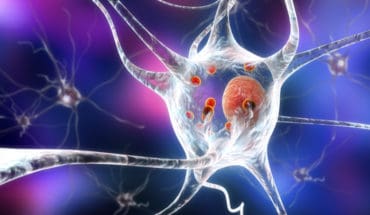Air pollution exposure impairs cellular energy metabolism according to new research.
Exposure to air particulate matter impairs the metabolism of olfactory mucosal cells, according to a recent study from the University of Eastern Finland. The results can contribute to a better understanding of how air pollutants may harm brain health, as the olfactory mucosa can act as a key pathway to the brain.
In the last decade, the adverse effects of ambient air pollutants, including particulate matter, on the central nervous system is increasingly reported by epidemiological, animal and post-mortem studies. Exposure to air pollutants has been associated with neurodegenerative disorders, among other things. The association of air pollutant exposure with deteriorating brain health is speculated to be driven by particulate matter entry via the olfactory mucosa, a neural tissue located at the upper part of the nasal cavity. The olfactory mucosa consists of a mixture of diverse cell types that are important for the sense of smell, as the only neural tissue outside of the brain. It acts as a first line of defence against inhaled agents, including air pollutants. How air pollutant exposure affects this key brain entry site remains elusive.
The original research article published in Particle and Fibre Toxicology by the research group of Associate Professor Katja Kanninen from the University of Eastern Finland, sheds light on how exposure to particulate matter impacts the function of the human olfactory mucosa. The study was carried out with a new cellular model based on primary human olfactory mucosal cells.
Using sophisticated functional measurements and transcriptomic analyses, the researchers found that particulate matter exposure causes critical impairment in the metabolism of olfactory mucosal cells. These functions of mitochondria, the cellular organelles responsible for energy production, are disturbed by air pollutants. The researchers also identified the mitochondria-targeted NPTX1 gene, which has been shown previously to be associated with brain disorders, as a key driver of mitochondrial dysfunction upon particulate matter exposure.
According to Associate Professor Kanninen, the research carried out at the University of Eastern Finland may provide important insight into the effects of harmful environmental agents on the brain.
“Given the importance of the nasal cavity as a potential gateway to the brain by particles and external invaders, I believe that more studies should focus on discovering how exposure to environmental agents and factors affects the olfactory mucosa. This may one day lead to new ways of limiting the adverse health effects of airborne particle exposure,” Associate Professor Kanninen notes.
- New lipid-based pathway discovered as key to memory formation - 25th June 2025
- Crucial link could explain how Alzheimer’s takes hold - 25th June 2025
- Understanding Your Mind Can Improve Daily Life - 25th June 2025







